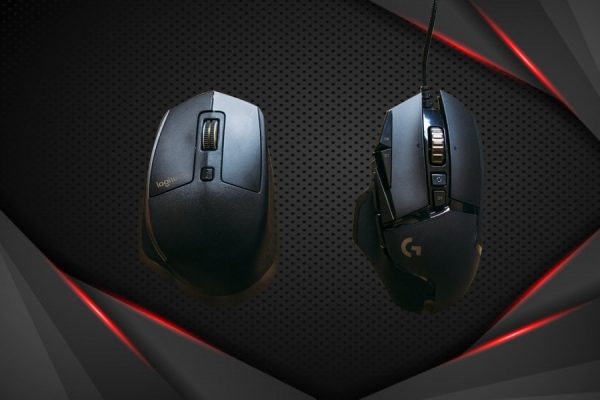Wired VS Wireless Gaming Mouse: Key Differences Explained
If you’re a PC gamer, then it’s likely that you’ve come across the age-old argument about whether a wired or Wireless mouse in Pakistan is best equipped to your needs. It’s a tricky problem and one that, until very recently, will have had one firm answer: wired, forever and ever.
Using a wired mouse means that you don’t have to think about compatibility when it is connected to your PC. The fear of battery problems goes down too, and as for reaction times, wired will still win out, right?
Until as recently as 2016, the claim carried a lot of power, and you would have found it hard to find a PC gamer that preferred a wireless mouse over a wired one. Something occurred that twisted heads and permanently altered the view of the portable mouse. Technology made it happen.
Below are some of the main distinctions described when it comes to purchasing a Wireless mouse in Pakistan as compared to a a wired mouse:
Cable Or No Cable?
The wired mouse, by definition, has a wire. This cable has meant that stuff like input lag isn’t a concern when the cursor plugs into a USB port (or PS/2 port if you’re old school) and there’s a slight input lag for a wired mouse.
Much wireless gaming mouse links to a device with a 2.4GHz USB connector, but low-latency Bluetooth is still a consideration, and many will actually come with a wire as well. If you invest in a good dedicated wireless gaming controller, the latency shouldn’t be a matter of concern.
Although traditionalists will often prefer wired, there are advantages to a completely wireless system. A cable can create resistance while gaming, and this is something that needs to be taken into account. The tension of the cable may be the difference between a victory or a defeat in the heat of an especially furious online fight.

Accuracy Matters
If you select a wired or wireless gaming mouse in Pakistan, then precision counts. There are a variety of items you can look at, but it’s worth mentioning that they are identical in both wireless and wired environments.
DPI is an important part. This is ‘dots per linear inch.’ The theory is that the greater the DPI, the less motion you have to use to get the arrow to move. The lower the DPI, and you’ve got to give the mouse better to get the mouse going.
Who Is In Charge?
Charging is one of the main distinctions between a wired mouse and a wireless mouse. The wired mouse doesn’t have the hassle of needing to be powered, whilst the wireless mouse will need to be charged.
This may be a challenge for hardcore gamers, but a wireless mouse will carry a charge of about 50 hours, sometimes more.
Gaming Anywhere
The proximity to the device is another important point where wireless and wired mice vary. It’s clear with the wired mouse that you need to be next to the device when you’re connected to it.
The benefit of a wireless mouse is that it can be operated apart from the computer up to 30 feet without disrupting the latency.
This is ideal for those who have moved their PC out of their bedrooms and built up a living room. This ensures that you can go to the sofa to play your game instead of trying to sit at your table and in your gaming chair.
The Final Verdict
Playing with a wired or wireless mouse is now a priority thanks to advances.
There will always be those who choose the wired and the ease of mind that coincides with the understanding that your mouse attachment will never compromise, or that a flat battery will jeopardize an all-night gaming session. All these things are a bit of an unusual occurrence now.
Wireless mouse technology also ensures that latency is on par with the wired devices. The likes of Tronsmart have worked to ensure that their 1.4Ghz connectivity variants are as reliable as they can be.
Choosing the best gaming mouse is down to ergonomics. How the mouse feels in your hand for you and how much you’re willing to pay for it. These should be the initial questions you ask yourself. This reveals how far wireless gaming mouse has progressed.

















































